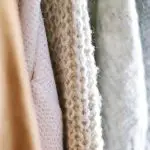You know the saying, 'Where there's a will, there's a way.' When it comes to removing slime from fabrics, you've certainly got the will, and we've got the way.
In this guide, you'll discover five easy and effective methods to banish slime stains from your favorite fabrics. From a simple vinegar and water solution to the freezing method, liquid laundry detergent, white vinegar and baking soda paste, and rubbing alcohol, these techniques will help you master the art of slime removal.
With these tricks up your sleeve, you'll be equipped to tackle any slimy situation with confidence and ease.
Let's get started!
Key Takeaways
- Vinegar and water solution effectively breaks down slime on fabrics.
- Freezing the fabric can harden the slime, making it easier to scrape off.
- Liquid laundry detergent is an effective slime remover and can be used as a pre-treatment.
- Creating a paste with white vinegar and baking soda can help remove slime stains from fabrics.
Vinegar and Water Solution
If you have slime on your fabrics, you can use a vinegar and water solution to effectively remove it. Vinegar, known for its natural cleaning alternatives, is highly effective in breaking down the components of slime.
To create the solution, mix equal parts of white vinegar and water in a spray bottle. Spray the solution directly onto the affected area, making sure it's saturated. Let it sit for a few minutes to allow the vinegar to penetrate the slime. Then, gently blot the area with a clean cloth. Repeat the process until the slime is completely removed.
Vinegar's effectiveness in removing slime from fabrics lies in its acidic nature, which helps to dissolve the sticky residue without damaging the fabric. Additionally, vinegar is a safe and eco-friendly option compared to harsh chemical cleaners.
Once the slime is gone, wash the fabric as usual to remove any lingering vinegar smell. This method provides a simple and efficient way to tackle slime stains using natural cleaning alternatives.
Freezing Method
One effective method for removing slime from fabrics is the freezing method, which can help harden the slime for easier removal. This method is particularly useful for delicate fabrics that may be damaged by more abrasive cleaning techniques.
Here are three key tips for using the freezing method to remove slime from fabrics:
- Fabric friendly freezing: Place the fabric in a sealable plastic bag and then put it in the freezer. Ensure that the slime-stained area is facing upwards to prevent it from sticking to other parts of the fabric.
- Preventing restaining: After freezing the fabric for a few hours, remove it from the freezer and carefully scrape off the hardened slime with a blunt knife or spoon. Be gentle to avoid damaging the fabric.
- Thaw and wash: Once the slime is removed, allow the fabric to thaw at room temperature. Then, launder the fabric as usual, following the care instructions. This will help to eliminate any remaining residue and ensure the fabric is clean and fresh.
Using the freezing method can effectively remove slime from fabrics without causing damage, making it a valuable technique for treating delicate materials.
Liquid Laundry Detergent
How effectively can you use liquid laundry detergent to remove slime from fabrics?
Liquid laundry detergent can be a powerful tool for removing slime from fabrics. To start, pre-treat the stained area by applying a small amount of liquid laundry detergent directly onto the slime. Gently rub the detergent into the fabric, allowing it to penetrate the slime and start breaking it down. Let the detergent sit on the fabric for a few minutes to work its magic.
After pre-treating the stain, wash the fabric as usual with a quality laundry detergent. For an extra touch of care, consider adding a fabric softener to the wash cycle to help ensure that your fabric remains soft and fresh. Once the washing cycle is complete, inspect the fabric to ensure that the slime has been completely removed. If necessary, repeat the pre-treating and washing process until the fabric is slime-free.
Liquid laundry detergent, when used correctly, can be an effective and gentle way to remove slime from your favorite fabrics.
White Vinegar and Baking Soda Paste
You can regularly create a white vinegar and baking soda paste to effectively remove slime from fabrics. This natural and gentle method is perfect for stain removal and fabric care. Here's how to make and use this powerful paste:
- Mixing the Paste: Start by mixing equal parts of white vinegar and baking soda in a bowl. Stir the mixture until it forms a smooth paste. The chemical reaction between the vinegar and baking soda helps to break down the slime and loosen its grip on the fabric fibers.
- Applying the Paste: Use a spoon or a small spatula to apply the paste directly onto the slime-stained area of the fabric. Gently work the paste into the fabric using your fingers or a soft-bristled brush. Allow the paste to sit on the fabric for about 15-20 minutes to penetrate the slime and start lifting the stain.
- Rinsing and Laundering: After the paste has had time to work its magic, rinse the fabric thoroughly with cold water. Once rinsed, launder the fabric as usual, following the care instructions on the garment's label.
This method isn't only effective for removing slime but also promotes fabric care, ensuring that your fabrics remain in top condition.
Rubbing Alcohol
To remove slime from fabrics, apply rubbing alcohol directly to the affected area and gently blot with a clean cloth to lift the stain. Rubbing alcohol is a powerful stain remover that can effectively break down the slime residue and lift it from the fabric fibers. Here's a simple and effective method for using rubbing alcohol to tackle slime stains on your fabrics:
| Rubbing Alcohol Stain Removal | |
|---|---|
| Step 1 | Blot the affected area with a clean cloth to remove any excess slime. |
| Step 2 | Pour a small amount of rubbing alcohol onto the stained area. |
| Step 3 | Gently blot the area with a clean cloth, working from the outside in to prevent spreading the stain. |
| Step 4 | Repeat the process until the slime stain is completely lifted. |
| Step 5 | Launder the fabric as usual to remove any remaining residue. |
Frequently Asked Questions
Can I Use the Vinegar and Water Solution on Delicate Fabrics Like Silk or Wool?
You can safely use the vinegar and water solution on delicate fabrics like silk or wool. It's gentle and effective for silk care, and also serves as a wool treatment. Just use a light touch and test in a small area first.
Will the Freezing Method Work on Slime That Has Already Dried on the Fabric?
Yes, the freezing method can work on dried slime. However, for stubborn stains, try using a heat method or stain remover. Ironing or steam cleaning can also help. Always test on a small area first.
Can I Use Any Type of Liquid Laundry Detergent to Remove Slime From Fabrics, or Are There Specific Brands That Work Best?
You can use any liquid laundry detergent to remove slime from fabrics, but some brands work better than others. Look for detergents with gentle, safe solutions that are effective at breaking down and lifting slime stains from fabrics.
Is the White Vinegar and Baking Soda Paste Safe to Use on Colored Fabrics, or Will It Cause Fading?
Yes, the white vinegar and baking soda paste is generally safe on colored fabrics, but it's always good to do a colorfastness test first. If you're unsure, there are alternative methods for fabric care and stain removal.
Will Rubbing Alcohol Damage or Discolor Certain Types of Fabrics?
Using rubbing alcohol on fabrics can damage or discolor certain types. When considering fabric care, it's best to test a small, inconspicuous area first. If in doubt, consult a professional cleaner for advice.
- Chamois Fabric at Michaels: What to Expect - June 22, 2025
- Chamois Fabric Wholesale: Top Suppliers and Manufacturers - June 22, 2025
- Micro Chamois Fabric by the Yard: Best Suppliers - June 22, 2025







